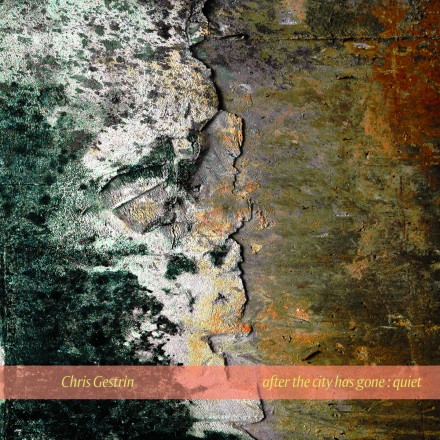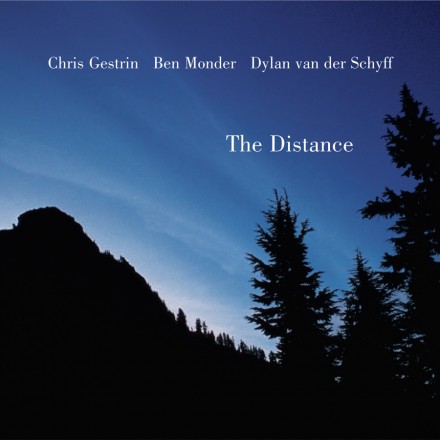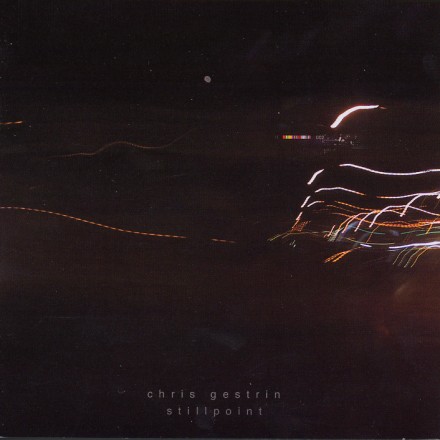Chris Gestrin
after the city has gone : quiet
SGL SA1568-2“You notice that he likes to play with the aesthetics of sound and that, for him, music is about craftsmanship….This is some of the most original and innovative new music on the scene today.”
—Popmatters.com
In the summer of 2004 Vancouver keyboardist Chris Gestrin spent three intense days in the studio on a Steinway D, recording in high resolution (DSD) with nine different duo and trio groupings of musicians from Vancouver’s vibrant creative music scene. Apart from a handful of compositions, including a few solo piano pieces, all the music was completely improvised, exploring the process of spontaneous composition with concentration, finesse and expressive power. In a sense it was a follow-up to his highly acclaimed 2002 Songlines release Stillpoint (an electro-acoustic sextet which includes three of the participants here). But there the emphasis was on a group concept and Chris as composer and producer; in the exposed settings here, success depended on sustaining the inspiration of the moment. In the course of a long process of listening, selecting and mixing, we decided that Chris would sequence two discs of music, because just one would not adequately represent the unique approach of each session and yet how they’re all connected.
The collaborators Chris chose for the project were either longtime friends or people he was eager to work with in this context – musicians who, like him, are skilled at both “inside” and “outside” playing and who like to develop ideas without limitations or preconceptions. So there are pieces here that sound like some kind of ambient/world music, contemporary chamber music, more “traditional” improv, or jazz, but most of them don’t take well to simple categorization. The discovery of an expressive pathway through each piece, and from piece to piece, is the record’s artistic statement, and it has a lot to do with Chris’s approach to music as a discipline. In the liner note he writes, “To me, improvised music is a form of meditation.” I asked him to expand on this, and he replied, “I guess to put it simply, I live music like I wish I could live my life. It’s not always possible to be 100% present when I’m creating music, but when it happens it really is true enlightenment. The music happens exactly as it should without any effort on my part. I am happy that this recording has captured a number of these moments.” An example? “There is one moment that gets me every time I hear it. On the duo with Peggy Lee, “D.S.,” at approximately 1:19, there is a complete shift in texture, rhythm and harmony that we both make simultaneously.”
The kind of deep listening going on here is accompanied by an enjoyment of many different kinds of music – which is perhaps related to studying film composition rather than jazz performance at Berklee in the mid-’90s. How did he come to synthesize these different interests and approaches into a personal style that has been characterized as imagistic or cinematic? “That’s a tricky one, as I don’t feel that I made any conscious choices about how all my influences were going to be incorporated into my personal style. I’ve listened to and still listen to a whole range of musical styles and artists that all inspire me greatly. On a spiritual level, I derive as much satisfaction listening to AC/DC as I would listening to Shostakovich or Keith Jarrett. I did listen to a lot of electronic, ambient and ‘new age’ types of music in my early years before becoming interested in jazz, and have always appreciated classical and orchestral music, both traditional and avant-garde. I guess one common trait that is ingrained in the majority of my music is a constant attention to harmonic and melodic content. Even if it’s obscure, I’m always hearing some movement in that sense.”
As Chris writes in the liner note, “I draw musical inspiration from nature and visual art but most often my motivation is sound itself” – thus it was important to do full justice to the shifting sonic textures and the space that encompasses the music. After the city has gone : quiet is a record that amply rewards close attention and an open mind. (By the way, a hang is a kind of steel hand drum created in Switzerland in 2000.)
For bios and more information on the performers: pepe-music.com, milesblack.com, berniearai.com, jonbentleymusic.com, gordongrdina.com, jessezubot.com, peggylee.net.
“For beautiful sounds beautifully recorded, this series of pensive meditations excels.” — Alexander Varty, The Georgia Straight
“Gestrin’s ability to listen (and play!) is on full display…What’s quite amazing is that a very wide range of styles and textures are presented, and yet it all hangs together in a fairly natural way. Is this jazz? A kind of world music? You’ll have to decide for yourself…It’s inspiring to see an idea lofted into the air, only to be changed up in real time and taken in completely different directions. It strikes me that After The City Has Gone: Quiet might be one of those key recordings that’ll turn someone on to the idea of improvised music.” — Mark Saleski, Blogcritics.org


